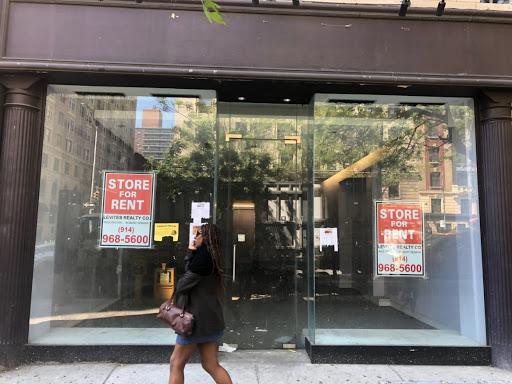Plagued Retail: A View From The Trenches
Tyler Durden
Sun, 06/28/2020 – 11:29
Authored by John E. McNellis, Principal at McNellis Partners, via WOLF STREET:
“I have 2 options that are non-negotiable.
I’m going bankrupt (chapter 7). Covid happened and I cannot survive. I’d rather not go through bankruptcy because it ruins my credit, but if I have no choice, I won’t think twice.
The second option is to let you keep my deposit, and take what I have in the bank which is around 10k. Again this is non-negotiable.
That is all I freakin have.”
This tenant’s sad bankruptcy threat sets the table for examining our retail – supermarket-anchored neighborhood shopping centers – in the Covid-19 era. Embellishing only slightly, we have two kinds of tenants: those that can’t pay and those that don’t wish to.
In short, bricks and mortar retail has been caught in a pincer movement, flanked on one side by Covid-19 itself, and on the other by its cure. You know this already: The virus separated us, the cure institutionalized that separation, forcing a societal shutdown that has driven us into our deepest recession in perhaps living memory, a recession that seems certain to run several years. The coronavirus means we will remain wary of one another until there’s a vaccine, perhaps longer; the cure means the majority of Americans will have little to spend.
What does this portend for our retailers? Putting aside kids swarming the beach towns, few of us wish to take more risks than necessary. Driving on a freeway entails an infinitesimal risk, but we do it to get somewhere; going shopping now involves a minute risk, but we accept it if the shopping is essential. (As an aside, we had no idea we were in the essential retail business until this year.)
Our essential retailers—supermarkets, drug stores, banks, convenience stores and gas stations—are doing fine; in fact, groceries and gas are killing it. Someone’s idea of essential, liquor stores and cigarette shops, are not complaining either.
As evidenced by the poor fellow who wrote the impassioned plea above, our problem is with the small shop tenants in our centers. Using a broad brush, you can divide small tenants into three principal categories: personal services, food, and the sellers of stuff (whether hard goods like cellphones or soft like clothing).
The winners among these categories are those that can address our fears (distancing) and our pocketbooks (cheap). Using these two fixed points, navigating retail is fairly straightforward.
Personal services – beauty shops, nail salons, drycleaners, massage parlors, yoga studios and gyms, etc. – win on cheap, but lose on distancing. Fortunately for some – notably, hair and nails – essential trumps distancing; these shops will come back swiftly. Others, like dry-cleaning and massage, are less essential and will take time to regain their pre-Covid levels.
Finally, there’s the sweat subcategory: small gyms, bike spinning parlors, yoga studios, etc. Absent an amazing vaccine, these tenants may be in serious trouble. You can’t make money at 50 percent maximum capacity and you’ll never convince some meaningful percentage of your customers that they’ll be safe dodging sweat in a tightly packed room.
Following the distancing/cheap lodestone, food shapes up like this: drive-throughs are golden, traditional take-out (e.g. pizza) is rocking, and those restaurants that can successfully ramp up their take-out should be fine.
You may have noticed that some ethnic foods—like Asian and Indian—hold up well on home delivery; others, particularly those with complicated menus, do not. The hardest hit in this category will be higher-priced small restaurants, the charming little shoulder-to-shoulder bistros with candlelit decor. Simply put, they cannot afford to run at 50 or 75 percent maximum capacity; they lose on both distancing and cheap.
By the way, the coronavirus didn’t create retail’s larger problem—excess capacity—it merely pulled its curtains back. According to Forbes, we have roughly 50 square feet of retail space per capita in the USA while Europe has just 2.5 square feet. Washington DC has a restaurant for every 103 residents, while San Francisco has one for every 201 residents. That’s a lot of competition.
Because of this, we anticipate losing a number of our restaurants and restructuring rent for others. But that goes just so far. The catch is that a successful restaurant only pays its landlord somewhere between 5 and 15 percent of its sales in rent. This means that even if we were to give our space to a restauranteur, she still couldn’t make it if her sales don’t approach their pre-Covid levels.
On to stuff. The sellers of essential stuff like eyeglasses, laptops and cell phones will be fine; it would take the Ebola virus itself to keep people away from Apple. But, let’s face it, few things are truly essential.
And stuff is where distancing and cheap diverge.
Price hardly matters if the stuff helps you bear distancing, especially if it lets you do something fun inside or, even better, outside. Best Buy’s stock is up 59 percent from its crisis depth; people are buying electronics to make home confinement tolerable. And bicycles and camping gear are flying off the shelves.
Back to cheap. Not that it ever went away—the “dollar” stores have been thriving for years—but the selling cheap-stuff-cheap phenomenon will only grow more universal thanks to our surging unemployment levels.
Bringing this home: To date, we’ve permanently lost half-dozen retailers, from restaurants to clothing to massage. Tenants who in effect said, sue me, I’m taking a hike. To compound this unpleasantness, it would be fair to say that replacement shop tenants are just behind spotted owls on the endangered species list. But if there is a safe harbor in retail, it’s a supermarket center in a good residential neighborhood. Without plan or compass, we happened to bob into that harbor years ago.
* * *
via ZeroHedge News https://ift.tt/2Zg5Bae Tyler Durden
